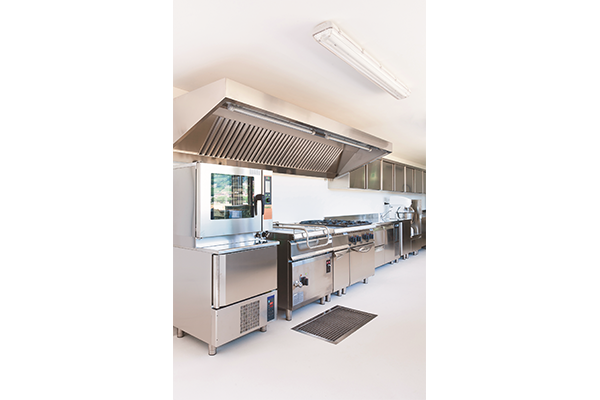What FMs should know before outfitting a foodservice space.
When upgrading appliances or constructing a new foodservice space, FMs have many options. However, due diligence is critical to securing the best fit for multi-site properties. Josh Zolin, CEO, Windy City Equipment, offers his tips for a top-notch experience.
1) Power Source. The first determination a FM must make is whether a kitchen will be powered by gas or electricity. “Some fully operational commercial kitchens can be 100 percent electric, such as restaurants in airports, and there are many reasons why some choose electric over gas,” Zolin explained. “Sometimes gas isn’t available, or people think electric is safer than gas-powered equipment.”
Gas stoves and ovens tend to cook food quicker, but the initial cost and installation may be much higher than electric appliances. Electric stoves and ovens may be easier to operate and provide a more even workspace for staff. However, if the power goes off, your appliances are off-line.
There are pros and cons to each, but Zolin has a personal preference. “Personally, I prefer gas. In my opinion, it’s safer and easier to maintain. There are significantly less variables with gas lines, as opposed to electricity that is traveling throughout the building and interconnected with other systems.” FMs need to weigh the costs of each before they make a decision.
2) Air Supply. FMs need to know if extra ventilation is required in the kitchen or foodservice space. Most electric kitchen equipment will not require an exhaust hood be installed, Zolin said, while all gas appliances require extensive ventilation.
“This also depends upon what type of foodservice is planned,” Zolin said. “Some applications within kitchens don’t need to be vented, but you should check with local inspectors first, because regulations vary from market-to-market.” In some cities, smaller appliances like microwaves don’t require an exhaust hood to be installed. However, other jurisdictions may have more strict rules and regulations.
3) Design Awareness. FMs need to understand the design and layout of the kitchen or food preparation space they’re working with. Easy access to appliances is necessary to control maintenance costs. “A well-designed kitchen will be significantly more efficient, as opposed to one that’s poorly designed and does not provide for easy maintenance access,” Zolin explained. He provided an example of how a poorly designed kitchen could result in skyrocketing FM repair costs.
“If the new kitchen will include a convection oven, that oven has a motor in the back, and eventually it will need repairs. If the kitchen is properly designed, maintenance professionals can easily access the back of the oven and make repairs,” he said. “However, if the kitchen is poorly designed, maintenance professionals may have to take the entire kitchen off-line and move other kitchen equipment to access the convection oven motor. Repair costs can soar thousands of dollars due to the extra time required to simply access the motor.”
4) Plan with Existing Suppliers. The keys to success are planning and communication. Extensive preparation and planning before the project begins will relieve stress and make the implementation of new foodservices much easier.
Planning extends to existing supplier relationships as well. Communication with suppliers who already provide services to the property is integral to ensure equipment is installed properly and efficiently.
“FMs should have established relationships with existing suppliers, and they should communicate everything planned for the store with existing plumbers, electricians as well as HVAC and refrigeration suppliers,” Zolin said. “These suppliers will be involved and will help complete the project.”
The more aware each supplier is of the others’ plans, the better they can work together to achieve success. With the large number of moving parts involved, improving communications will go a long way toward ensuring the project is completed in a timely and cost-effective manner.


